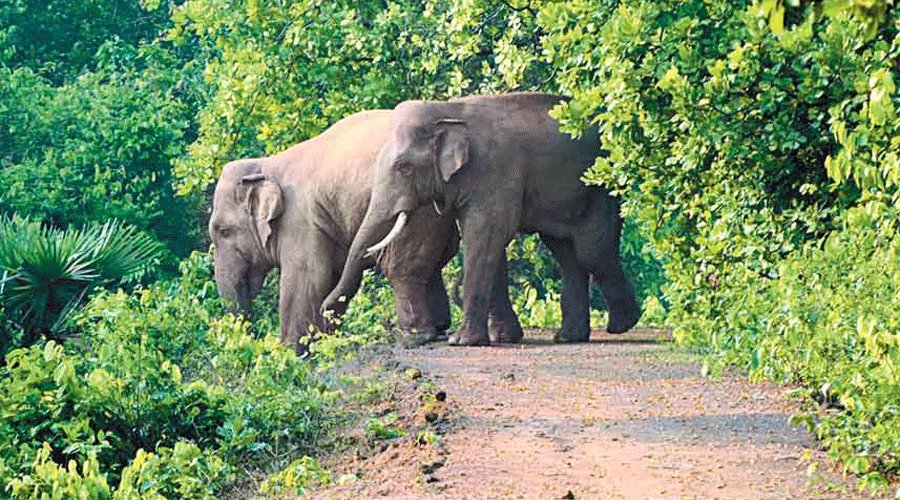The Bengal forest department has taken up a special plan to ensure the return of most of the 170-odd elephants currently inhabiting the forests of the JungleMahal, to neighbouring Jharkhand and Odisha and reduce human-animal conflict in the western regions of this state.
Soumtira Dasgupta, the principal chief conservator of forest and head of forest force (PCCF and HoFF), on Sunday headed a meeting with all senior foresters— including divisional forest officers of south Bengal— in Bankura’s Bishnupur to discuss the plan and method to start driving the elephants towards the forests of Jharkhand and Odisha, from where they usually come to stay in Bengal forests.
Senior forest officials of Bengal attended a meeting with their Jharkhand and Odisha counterparts last month to ensure there is no resistance from the authorities in those states. The process of sending back the tuskers would start in March-end, once all board examinations are over.
There are around 170 elephants, spread mainly over the four Jungle Mahal districts of Bankura, Jhargram, West Midnapore, and Jhargram.
“We have taken up a special strategy to drive most of the existing elephants in south Bengal to the forests of Jharkhand and Odisha. Today (Sunday) we sat in the meeting to discuss how we can ensure the return journey of the elephants smoothly with minimum human-animal conflict,” said Dasgupta to this newspaper.
“We have taken several measures and precautions to conduct the drive in a professional manner to avoid conflicts with humans. We will start the process at the end of March. It will take some time,” added the PCCF and HoFF.
Sources in the forest department said this massive plan had become a priority following the growing human-elephant conflict in the region, resulting in the loss of at least 20 lives over the past six months, and many acres of crops being damaged.
“The recent death of a Madhyamik examinee in Jalpaiguri district (north Bengal) in an elephant attack prompted the state government to take all possible measures to minimise such attacks. Earlier, such efforts used to be made separately by the divisions. This time, there will be tight coordination between all senior foresters to ensure the return of the elephants to the neighbouring states. We can’t claim that there would be no loss of lives or crops during the process of steering the elephants(to Jharkhand and Odisha). We are trying to prevent the tragedies to the best of human ability,” said a senior forest official.
Foresters said earlier the elephants used to come to Bengal for a certain period of time and return to Jharkhand and Odisha around March and April. In the past few years, the elephants which came from Jharkhand and Odisha have not been making the return journey because of plentiful food and dense forestation in Bengal.
“The number of elephants staying here (in Bengal) almost doubled in the past few years, as a large number of the animals did not travel back to the neighbouring states from where they originally came. According to the master plan this year, our goal is to ensure the return of at least 160 of the 170-odd elephants,” said a source.
Steering herds apart, foresters also said they had a separate plan to capture lone elephants who “go rogue”.










